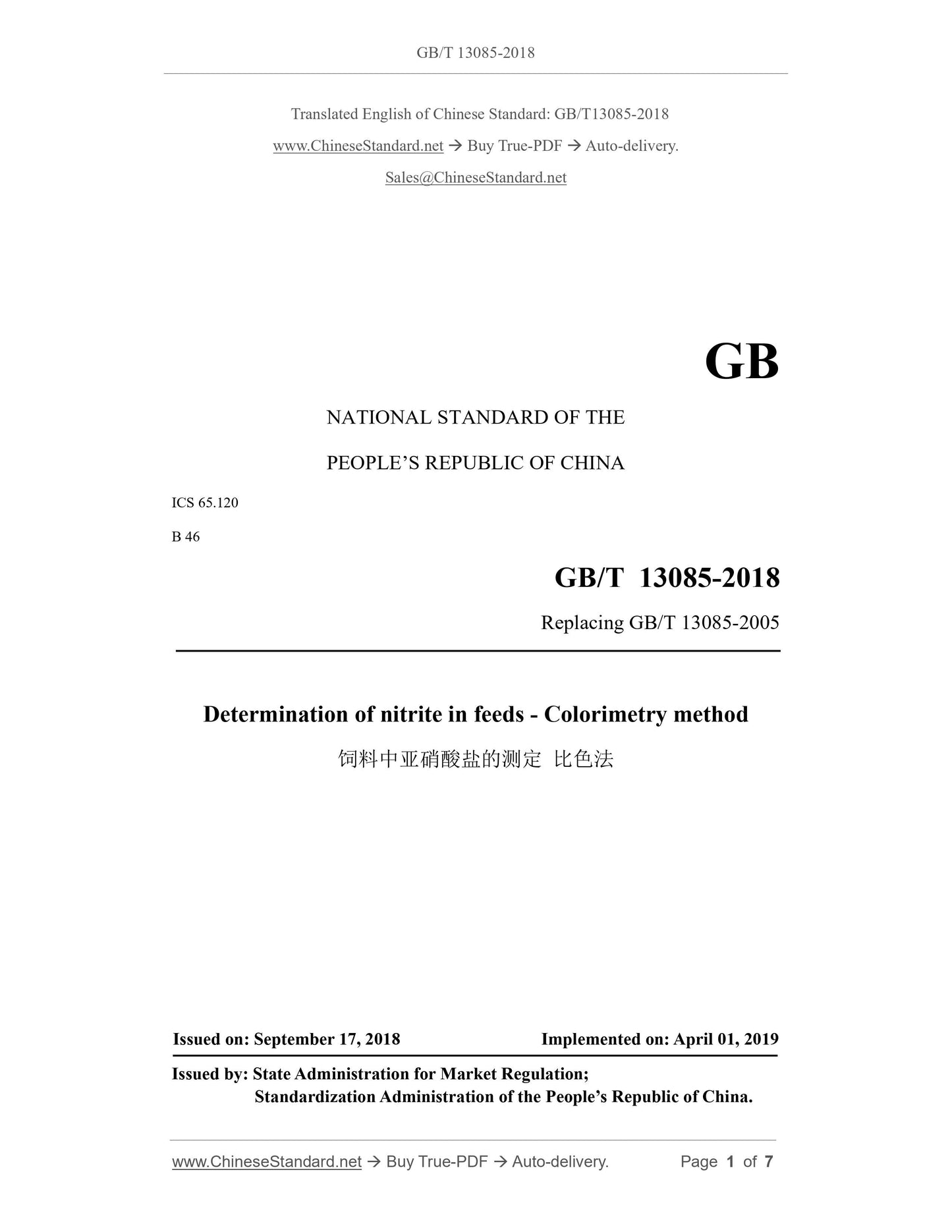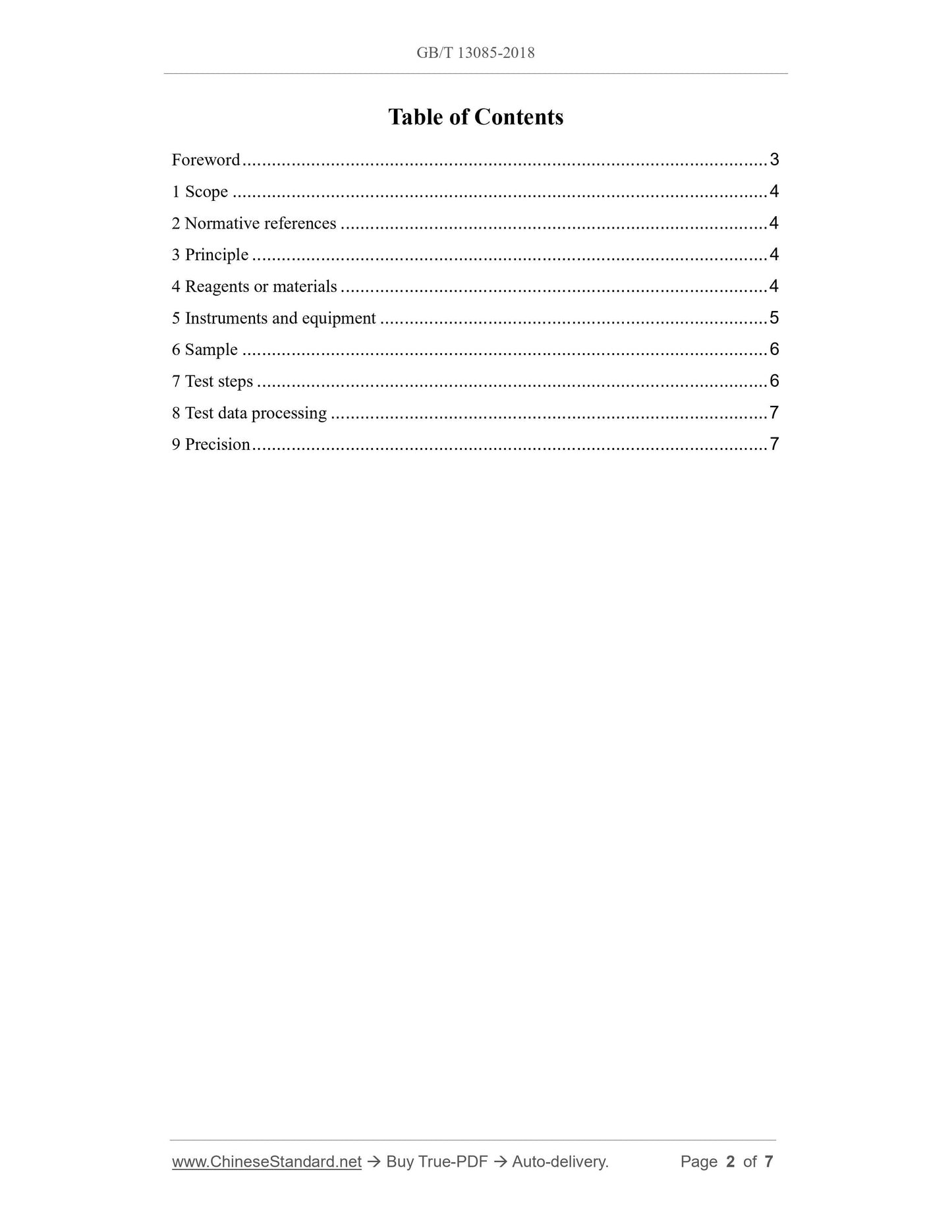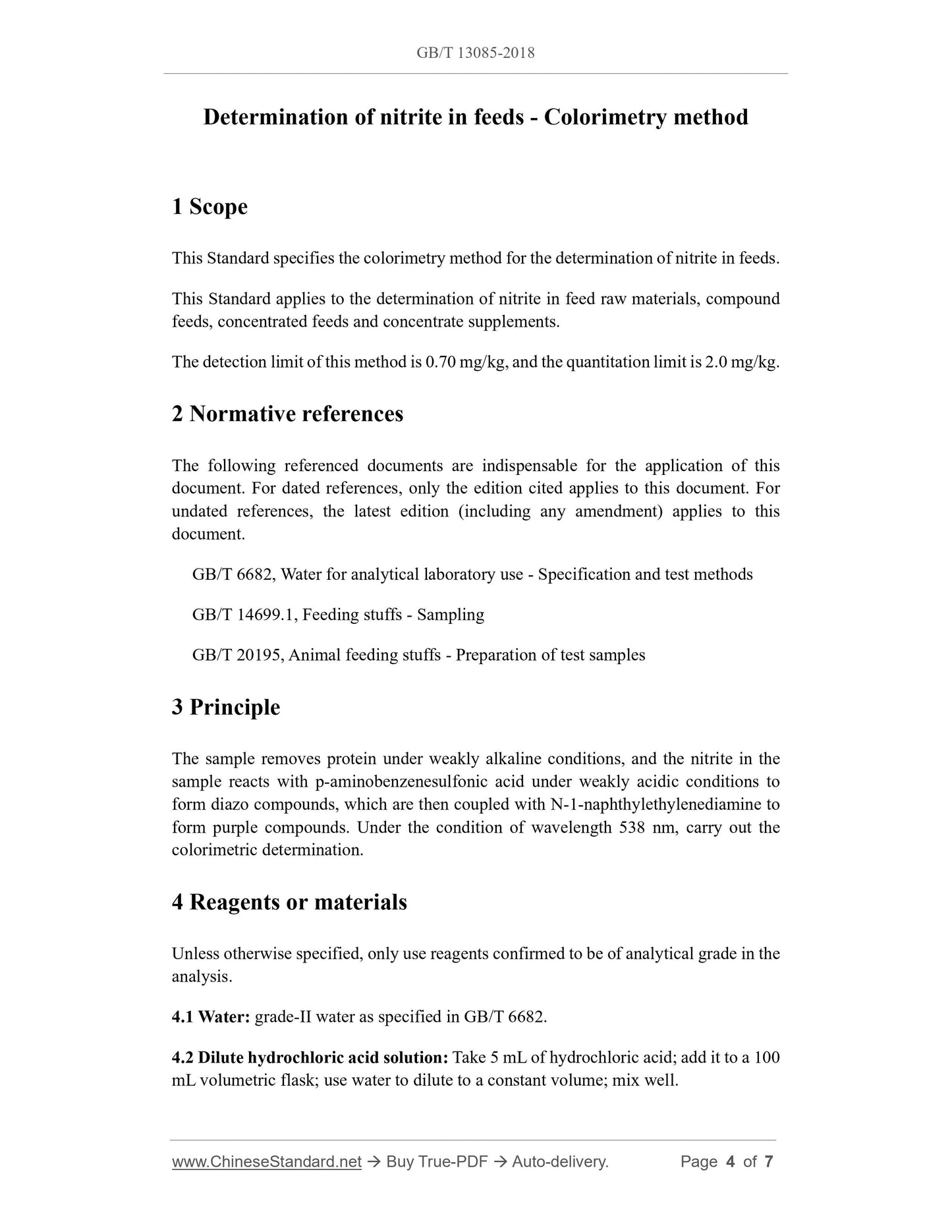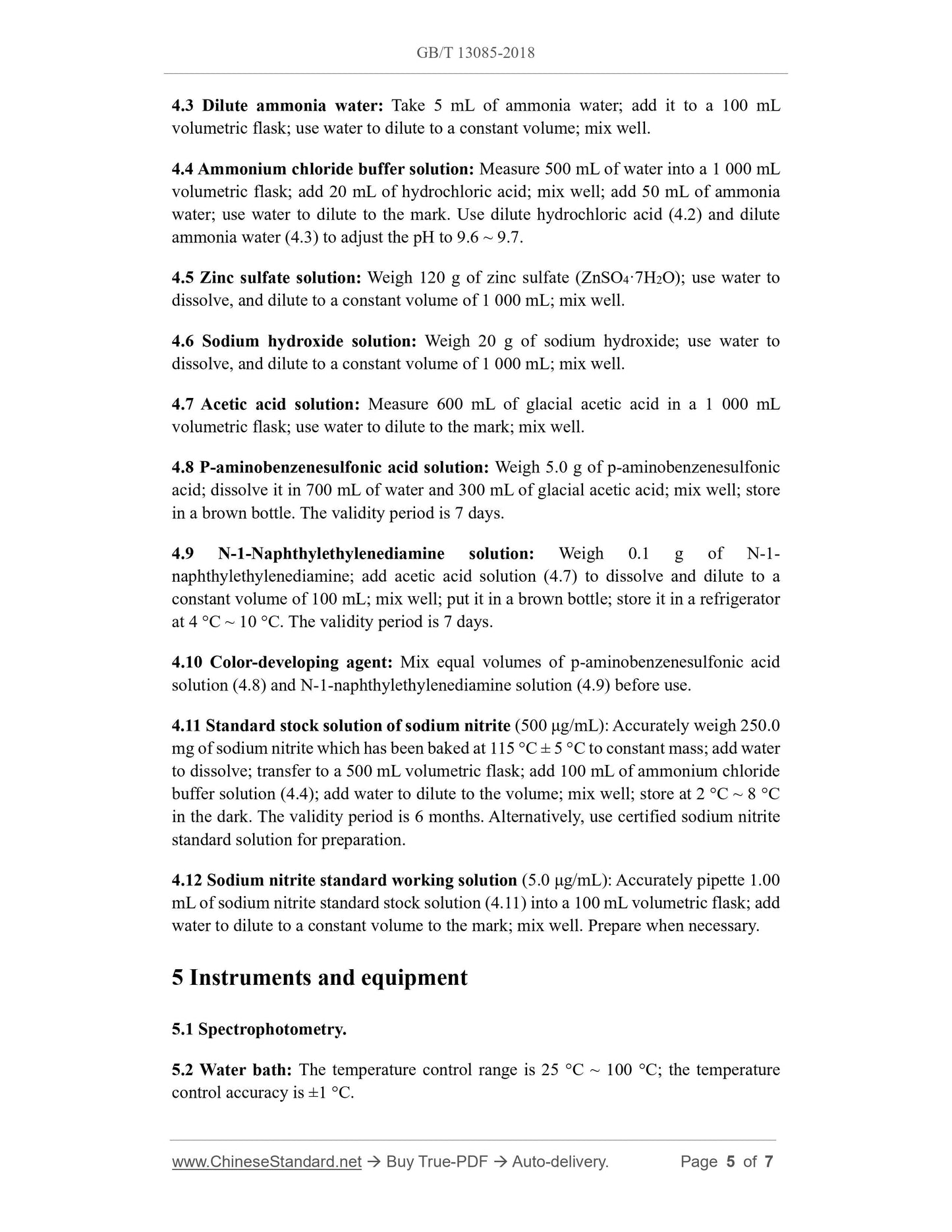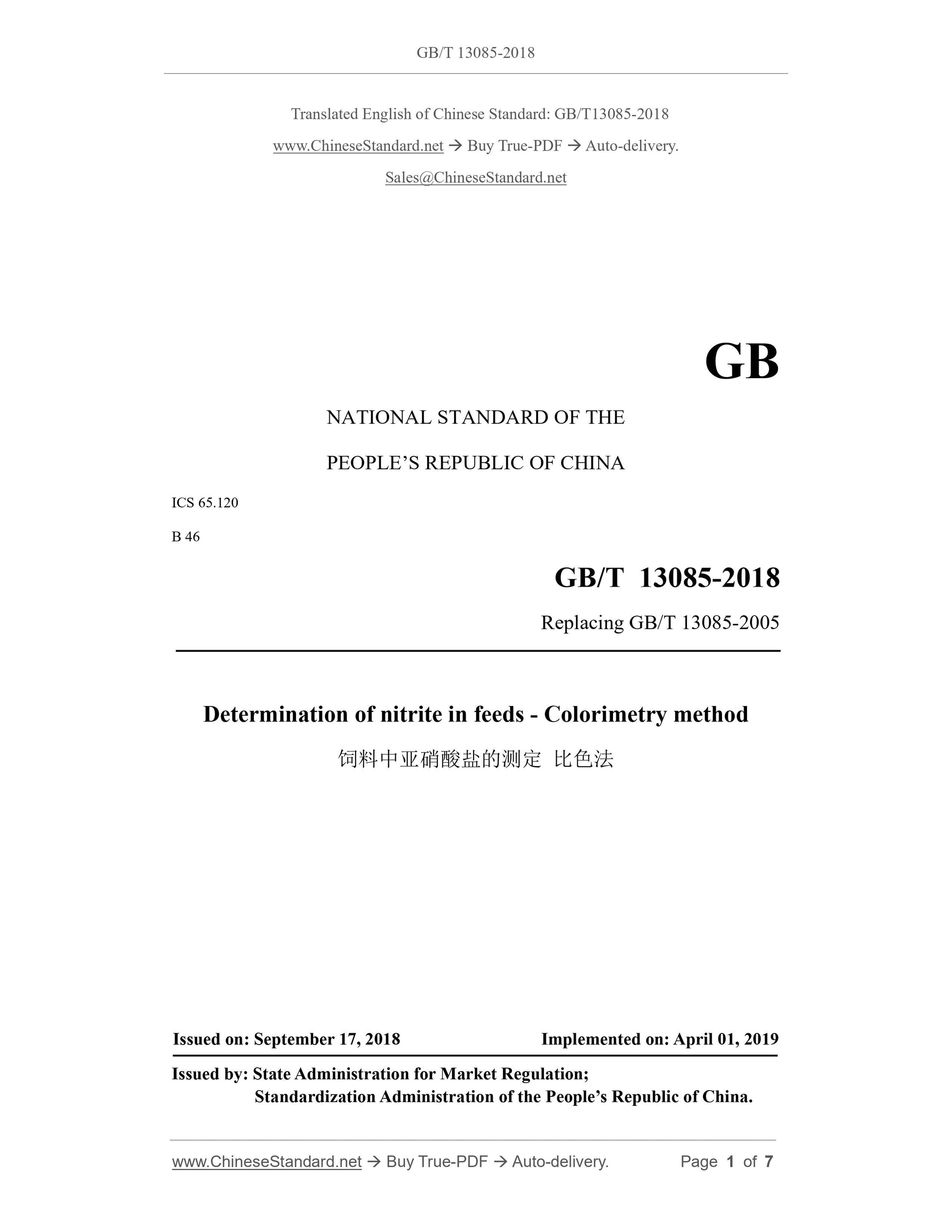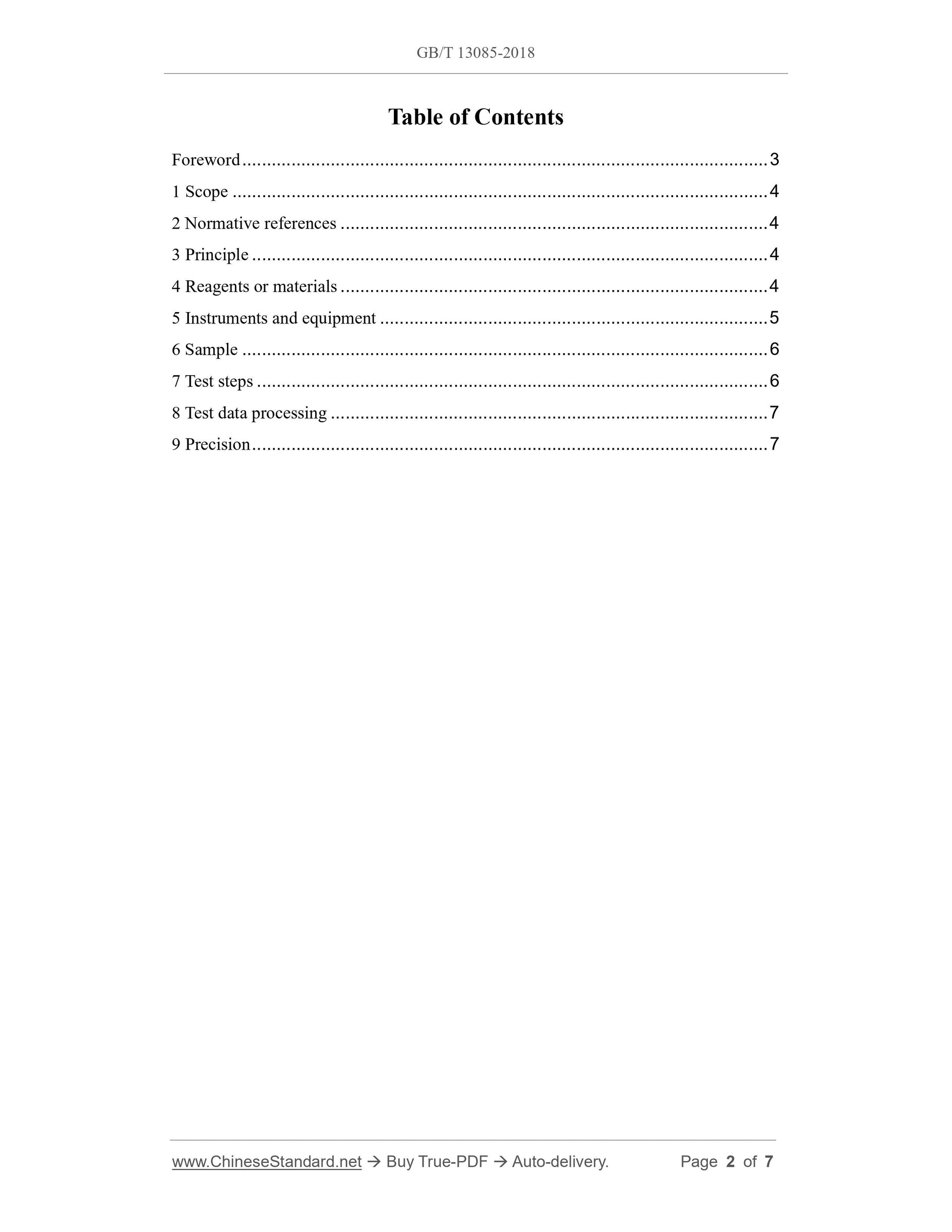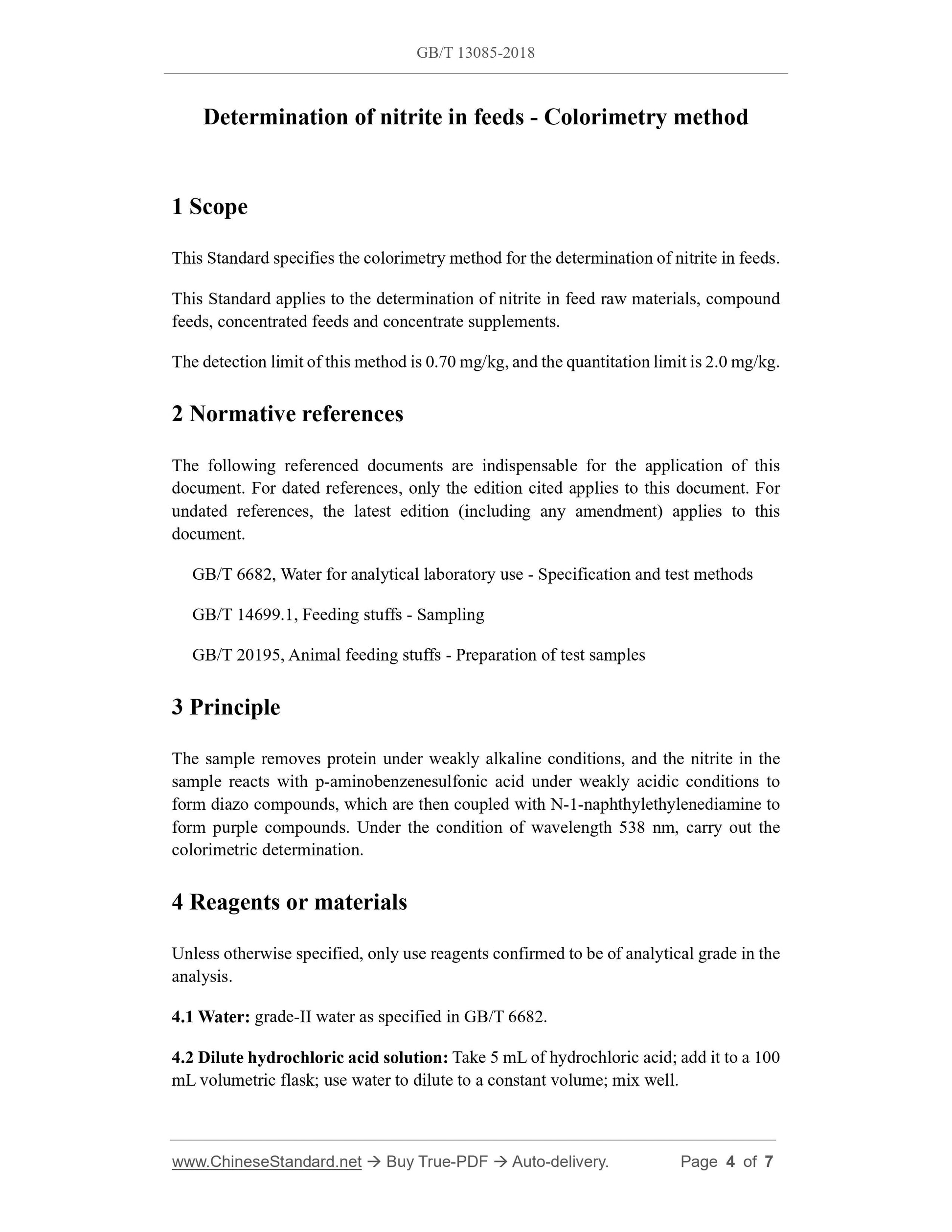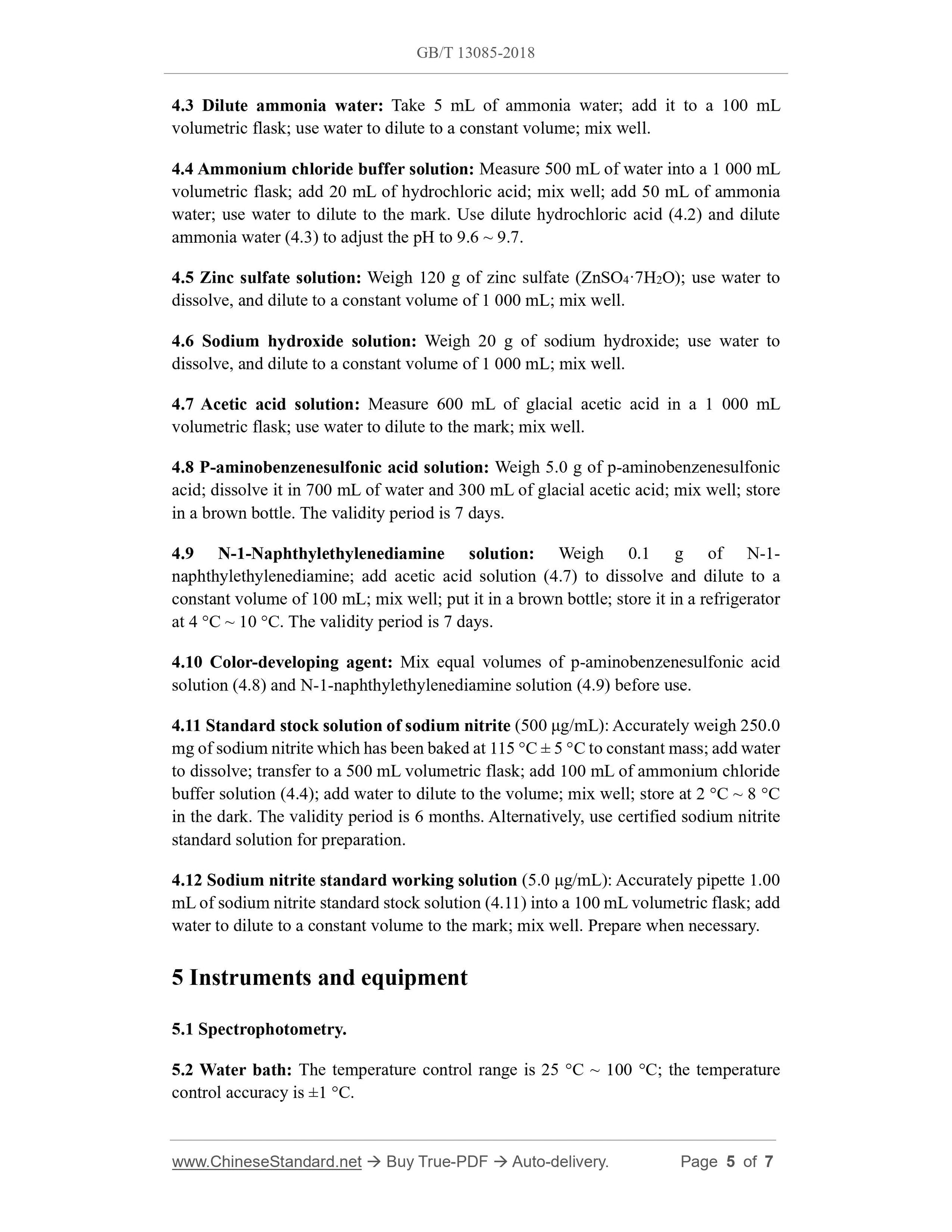1
/
of
4
www.ChineseStandard.us -- Field Test Asia Pte. Ltd.
GB/T 13085-2018 English PDF (GB/T13085-2018)
GB/T 13085-2018 English PDF (GB/T13085-2018)
Regular price
$105.00
Regular price
Sale price
$105.00
Unit price
/
per
Shipping calculated at checkout.
Couldn't load pickup availability
GB/T 13085-2018: Determination of nitrite in feeds -- Colorimetry method
Delivery: 9 seconds. Download (and Email) true-PDF + Invoice.Get Quotation: Click GB/T 13085-2018 (Self-service in 1-minute)
Newer / historical versions: GB/T 13085-2018
Preview True-PDF
Scope
This Standard specifies the colorimetry method for the determination of nitrite in feeds.This Standard applies to the determination of nitrite in feed raw materials, compound
feeds, concentrated feeds and concentrate supplements.
The detection limit of this method is 0.70 mg/kg, and the quantitation limit is 2.0 mg/kg.
Basic Data
| Standard ID | GB/T 13085-2018 (GB/T13085-2018) |
| Description (Translated English) | Determination of nitrite in feeds -- Colorimetry method |
| Sector / Industry | National Standard (Recommended) |
| Classification of Chinese Standard | B46 |
| Classification of International Standard | 65.120 |
| Word Count Estimation | 6,653 |
| Date of Issue | 2018-09-17 |
| Date of Implementation | 2019-04-01 |
| Older Standard (superseded by this standard) | GB/T 13085-2005 |
| Issuing agency(ies) | State Administration for Market Regulation, China National Standardization Administration |
Share
